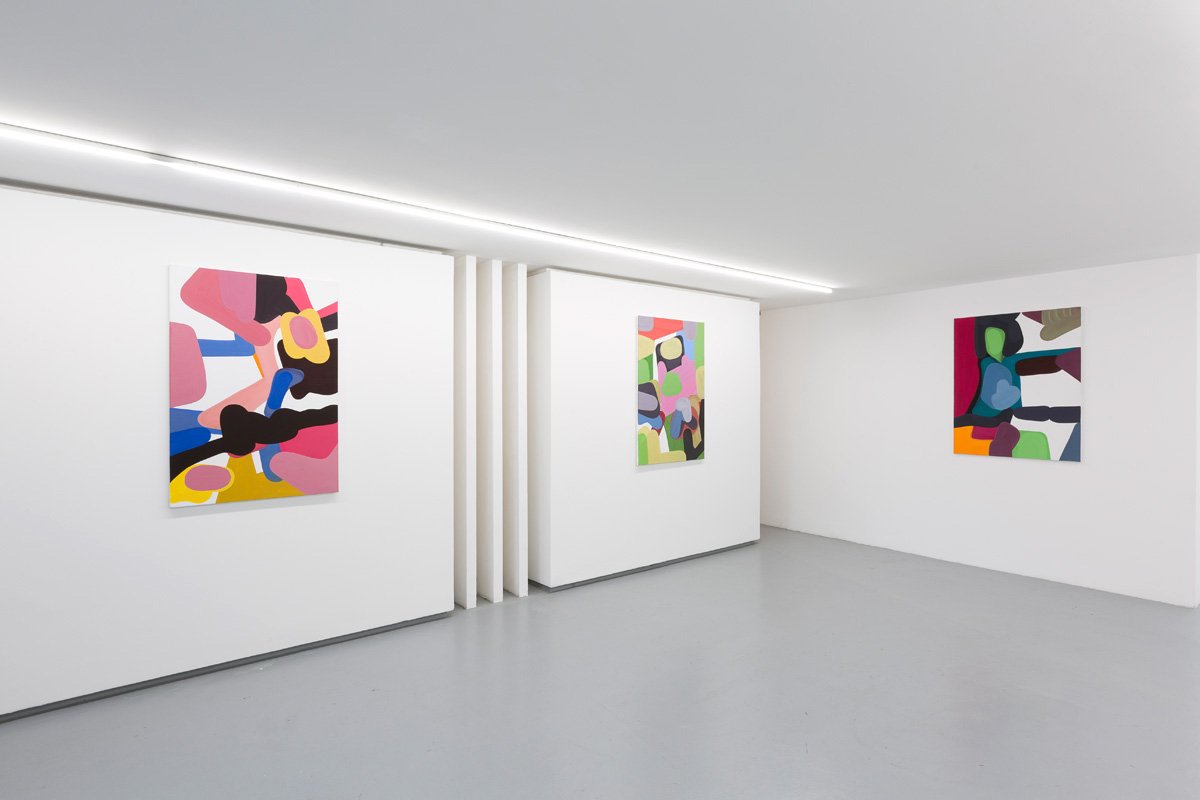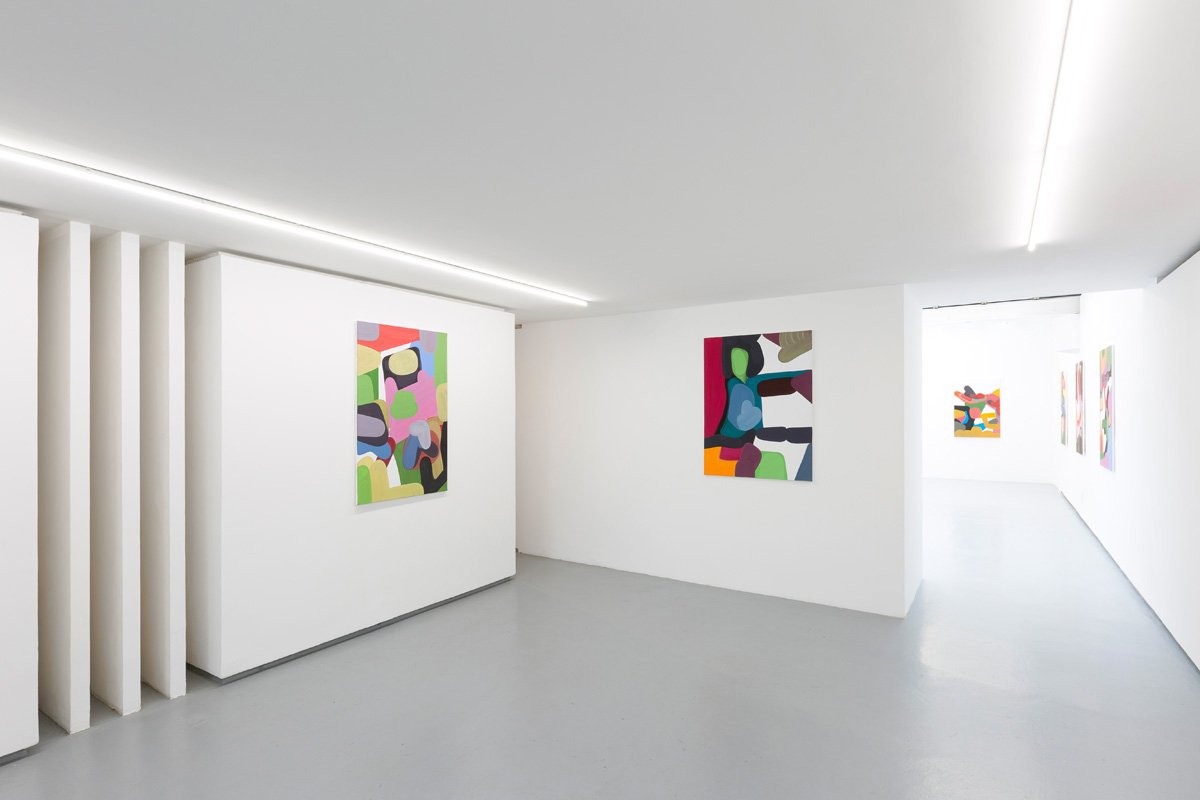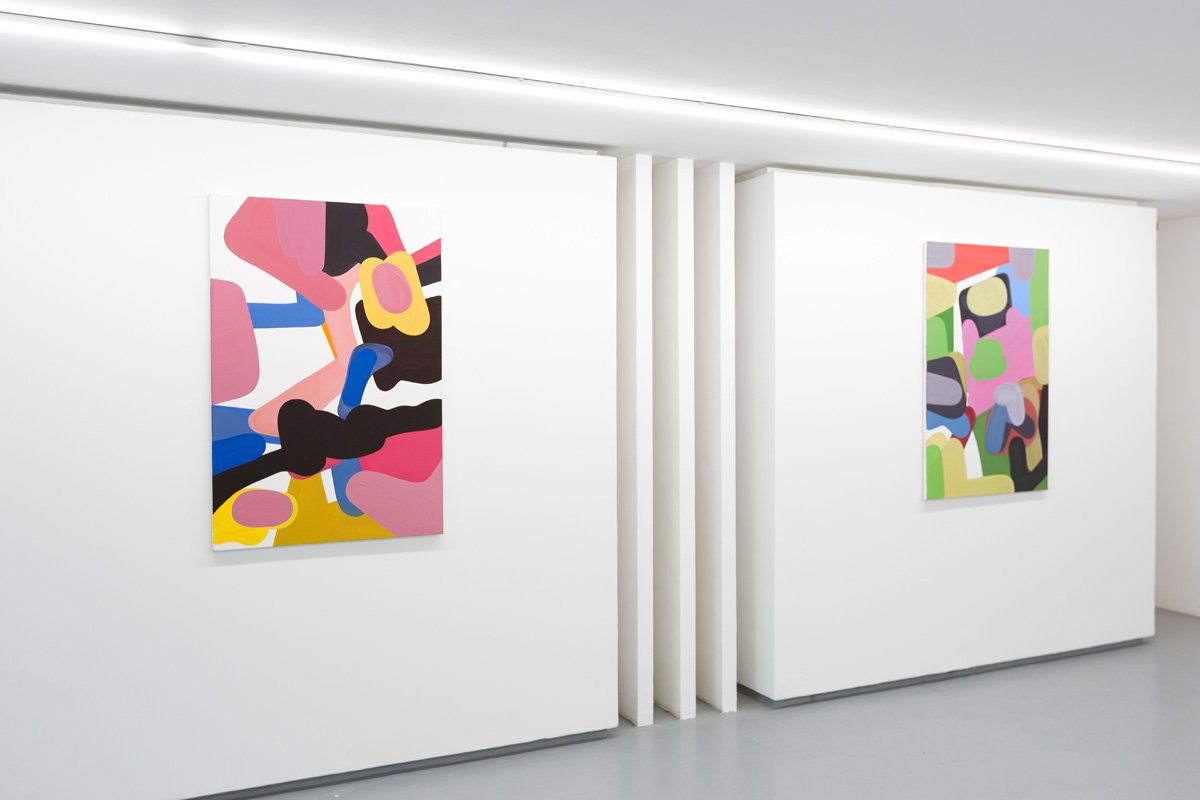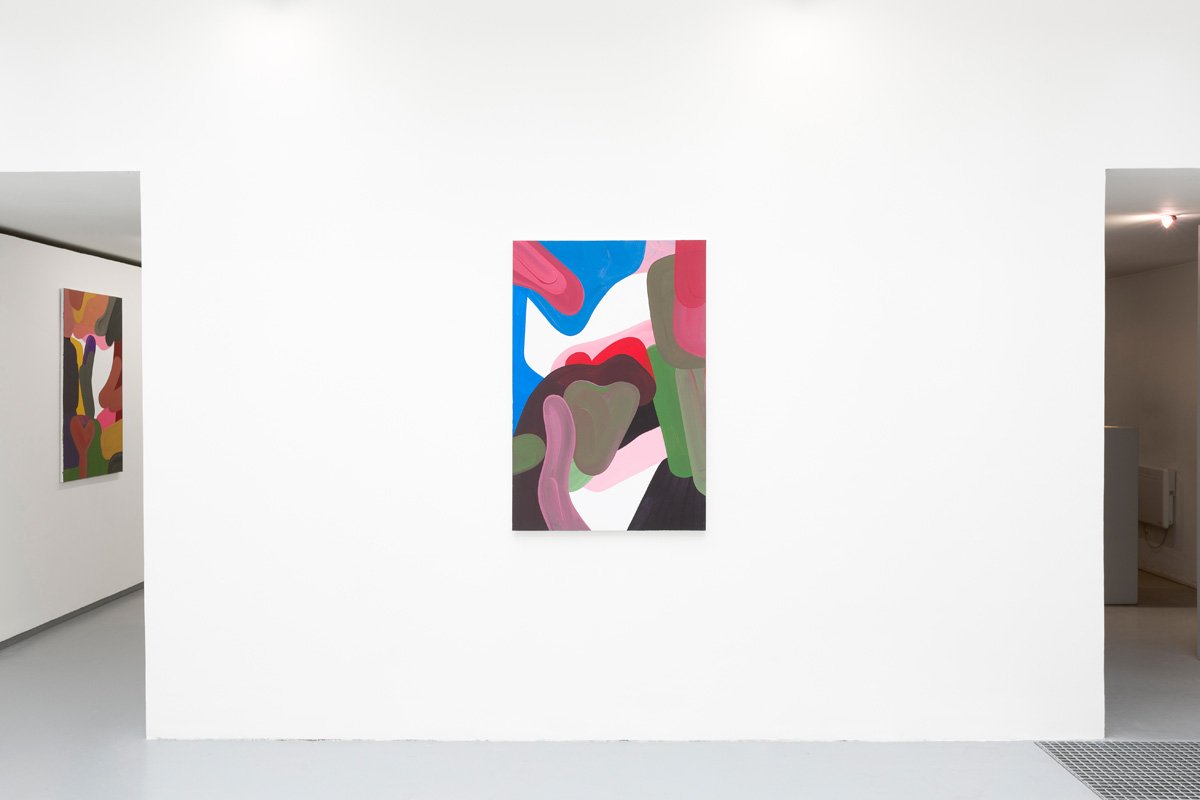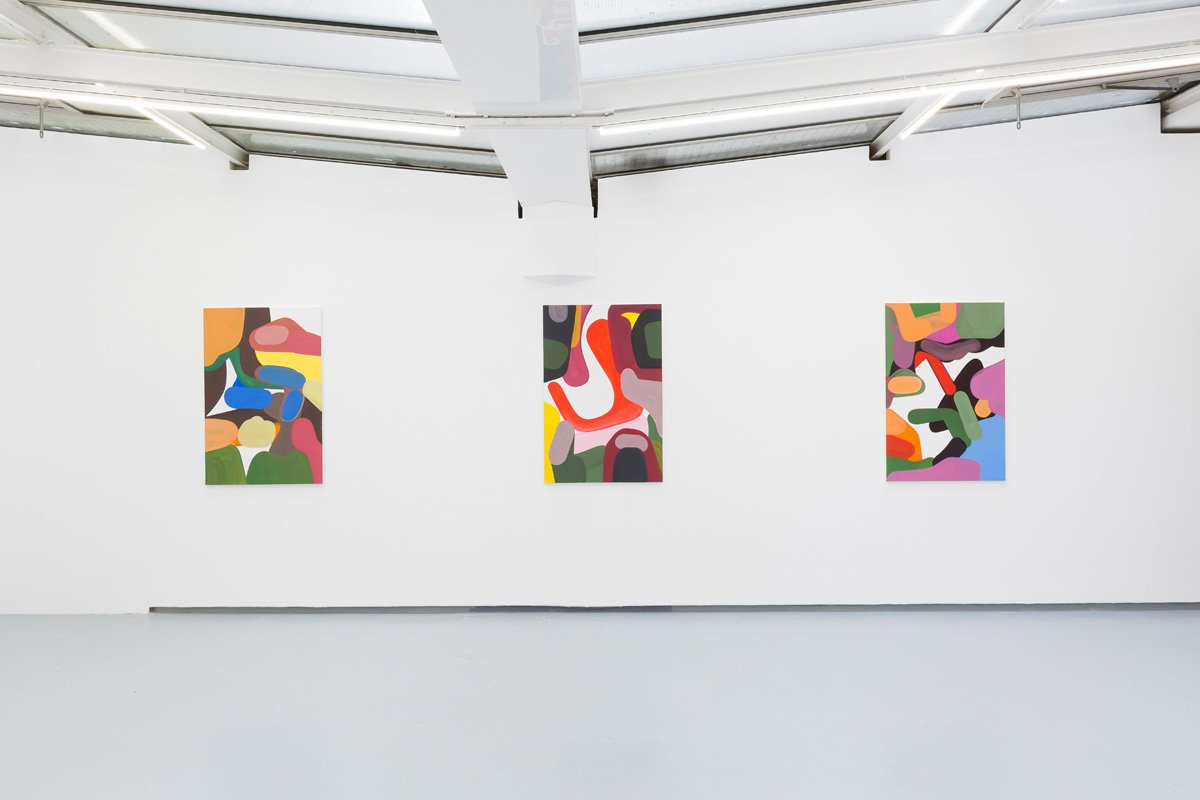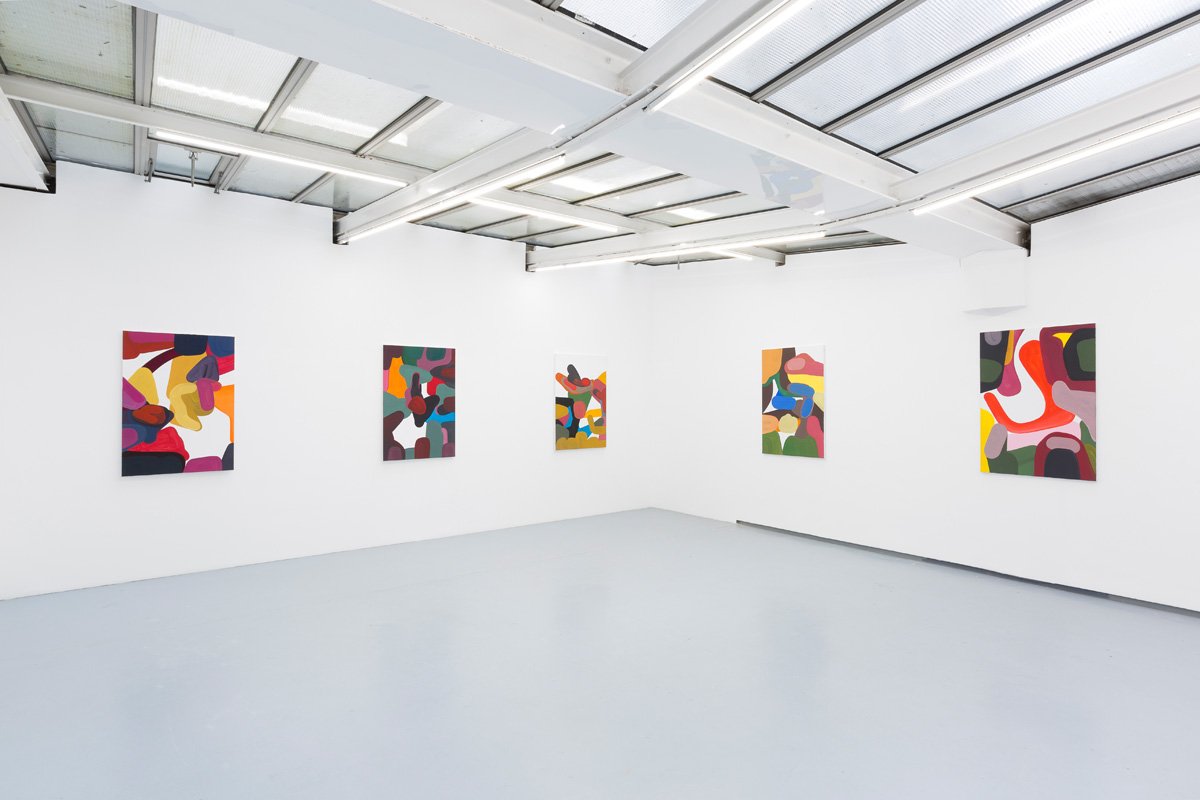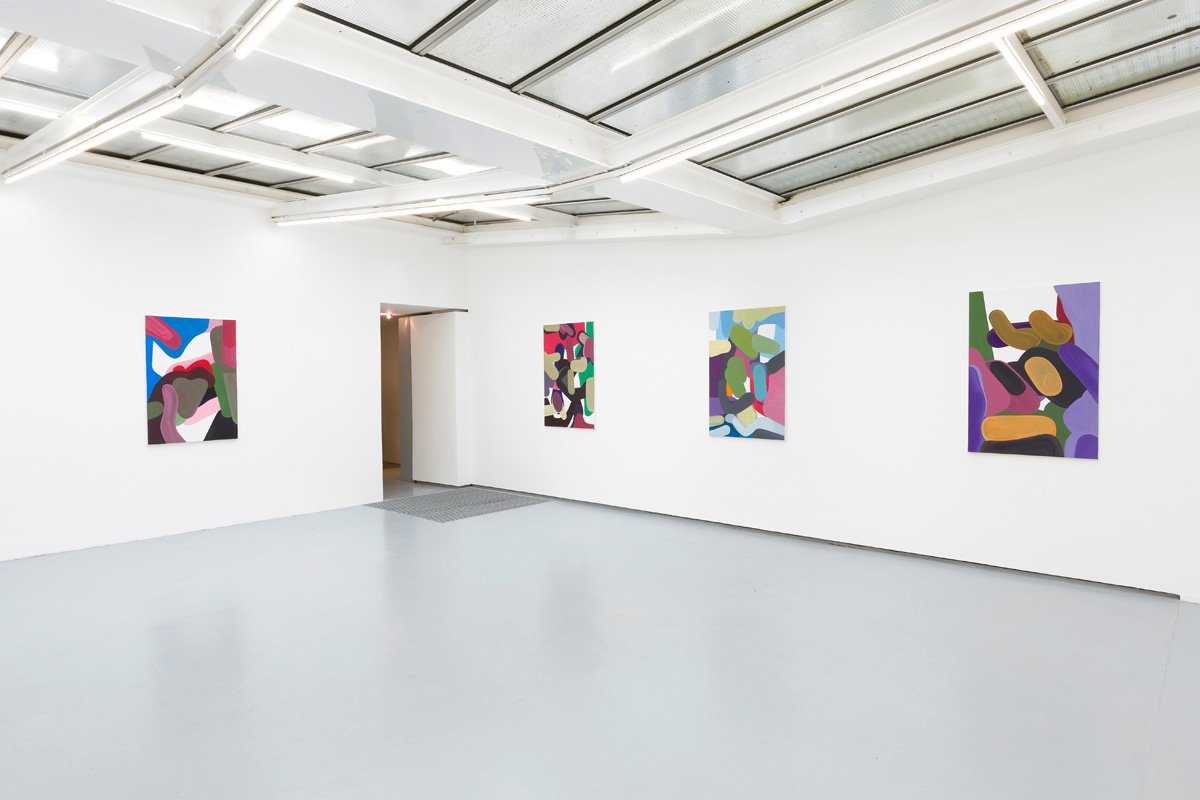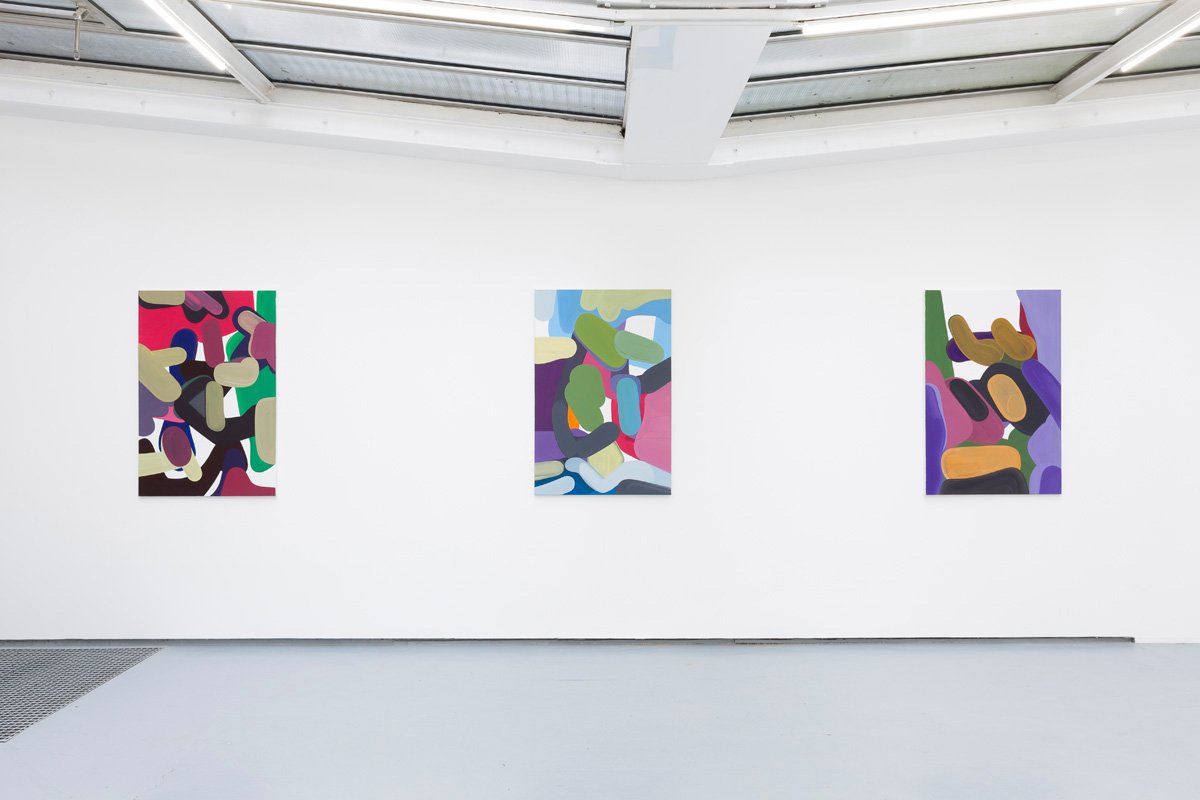A (et sous) nos yeux, dans les tableaux d’Isabel Michel, un monde semble éclore, un monde ou un pan de monde, tant le format des toiles demeure modeste, plus réduit en tout cas que celui des précédentes séries. N’empêche, une dynamique est à l’œuvre avec ces formes aux bords arrondis, qui se chevauchent, se frôlent, glissent les unes sous les autres, s’évitent, se contournent, mais se rattrapent et se lèchent. Jamais anguleuses, plutôt replètes avec leur silhouette arrondie, elles ne sont pas plates et les coups de pinceaux travaillent, sobrement, à leur prêter ce type de volume. Elles arborent en outre des teintes mates mais onctueuses. La palette chatoie, sans clinquant, charrie parfois un peu de matière en relief, dans une harmonie subtile et délicate. Mais, ces mauves qui s’alanguissent à côté des touches carmins, ces jaunes pâles qui contrastent sans arrogance avec des verts foncés négociant à leur tour, sans forcer, avec des nuances de noirs, accroissent, par leurs tintements chromatiques, l’impression que quelque chose se meut, s’agite, s’ébroue, se mêle de concert, sans se mélanger, sans s'accorder. Or, aucun élément ne semble avoir besoin de pousser trop fort pour prendre place. Densément peuplé, chaque tableau entretient une fructueuse collaboration entre les formes. Selon l'artiste, chacune est à sa place et il ne saurait en être autrement. Sans quoi tout le tableau faillirait.
Quand est-ce qu'un tableau, abstrait, tient ou pas, reste un mystère, il faut bien l'avouer. La justesse des couleurs et des formes en un certain ordre assemblé reste un critère subjectif. De fait, la peinture d'Isabel Michel ne livre ni ne s'en remet à aucune méthode à laquelle s'agripper pour l'apprécier, ni surtout la commenter. Ça fait partie du jeu. C'est une peinture élastique et pulpeuse. A l'image de ses formes qui pulsent, poussent, se compressent ou se dilatent, sans façons. C'est une peinture qui contourne les obstacles et les frontières en privilégiant la souplesse, l'esquive, la malléabilité. Une peinture qui fait tenir tout et son contraire (chromatique) dans les limites du format choisi.
Dès lors, peut-on tout en dire ? Tout et son contraire ? Pas vraiment puisque c'est une peinture qui n'est en rien autoritaire, qui se fie, non pas à un programme, mais à des teintes et à leurs capacités à tilter. A pas grand chose de fiable en somme. D'autant que le tout repose quand même sur ces formes ourlées et leur capacité à glisser sur un terrain (la toile) considéré comme savonneux (pas figé, mouvant). L'interprétation glisse alors au diapason. Ces formes, fluides, folles, naviguant entre elles à leur aise, peuvent s'apparenter à celles de galets sur la plage ou de feuilles fomant litière. Sourd ainsi, dans ces peintures, un écho feutré à d’autres genres picturaux (à la peinture de paysage, à la nature morte notamment) à condition d’admettre que les formes, qui s'y répandent, ont effacé, dissout, réduit tous les détails (des objets, des pans de la nature) pour n’en retenir que leurs vagues contours et mettre à jour la place que les choses se répartisssent entre elles. Cartographie du hasard, rythmé par le ressac des coups de pinceaux et les improvisations de la matière, ces toiles paraissent retranscrire ou imaginer le mouvement des choses qui se répartissent leur place dans le monde. Du moins, c'est ainsi, que la peinture d'Isabel Michel nous paraît toucher terre, ou le ciel ou l'âme : en dressant le tableau de ce à quoi ressemble ce qui reste une fois les tempêtes passées et les coups au cœur éprouvés.
Judicaël Lavrador
Before (and before) our eyes, in Isabel Michel's paintings, a world seems to be blossoming, a world or a section of a world, so modest is the format of the canvases, smaller in any case than in previous series. All the same, a dynamic is at work with these rounded-edged shapes, which overlap, brush against each other, slide under each other, avoid each other, go around each other, but catch up and lick each other. Never angular, with their rounded silhouette they are not flat, and the brushstrokes work, soberly, to lend them this kind of volume. The colours are matte but creamy. The palette is shimmering, without flashiness, sometimes bringing out a little matter in relief, in a subtle, delicate harmony. But these mauves that languish next to carmine touches, these pale yellows that contrast without arrogance with dark greens negotiating in turn, without forcing, with shades of black, increase, by their chromatic tinkling, the impression that something is moving, agitating, shaking, mingling in concert, without mixing, without tuning. Yet no element seems to need to push too hard to take its place. Densely populated, each painting maintains a fruitful collaboration between the forms. According to the artist, each is in its place, and it could not be otherwise. Otherwise the whole picture would fall apart.
Admittedly, it's a mystery when a painting, whether abstract or not, holds up. The appropriateness of colours and shapes in a certain assembled order remains a subjective criterion. In fact, Isabel Michel's painting neither delivers nor relies on any method to which to cling in order to appreciate it, or above all to comment on it. It's all part of the game. It's an elastic, pulpy painting. Like its forms, it pulsates, grows, compresses or expands, in no particular way. It's a style of painting that bypasses obstacles and boundaries, favouring suppleness, evasiveness and malleability. It's a painting that holds everything and its (chromatic) opposite within the limits of the chosen format.
So can we say everything about it? Everything and its opposite? Not really, because this is a painting that is in no way authoritarian, that relies not on a programme, but on colours and their ability to tilt. In short, it doesn't rely on much. All the more so because the whole thing rests on these hemmed shapes and their ability to glide over a terrain (the canvas) considered to be slippery (not fixed, but moving). The interpretation then slips into tune. These forms, fluid, wild, sailing between themselves at their leisure, can be likened to pebbles on the beach or leaves fomenting litter. In these paintings, you can hear a muffled echo of other pictorial genres (landscape painting, still life in particular), provided you admit that the shapes that spread through them have erased, dissolved and reduced all the details (of the objects, of parts of nature), retaining only their vague outlines and revealing the place that things divide between them. A cartography of chance, punctuated by the backwash of brushstrokes and the improvisations of the material, these canvases seem to transcribe or imagine the movement of things as they divide up their place in the world. At least, that's how Isabel Michel's paintings seem to touch the earth, or the sky, or the soul: by painting a picture of what remains once the storms have passed and the blows to the heart have been felt.
Judicaël Lavrador


